*NURSING > TEST BANK > Chapter 3: Interviewing and the Health History ; Bates’ Guide to Physical Examination and History (All)
Chapter 3: Interviewing and the Health History ; Bates’ Guide to Physical Examination and History Taking, 12th Edition
Document Content and Description Below
Bates’ Guide to Physical Examination and History Taking, 12th Edition Chapter 3: Interviewing and the Health History Multiple Choice 1. You are running late after your quarterly quality improveme... nt meeting at the hospital and have just gotten paged from the nurses' station because a family member of one of your patients wants to talk with you about that patient's care. You have clinic this afternoon and are double-booked for the first appointment time; three other patients also have arrived and are sitting in the waiting room. Which of the following demeanors is a behavior consistent with skilled interviewing when you walk into the examination room to speak with your first clinic patient? A) Irritability B) Impatience C) Boredom D) Calm Ans: D Chapter: 03 Feedback: The appearance of calmness and patience, even when time is limited, is the hallmark of a skilled interviewer. 2. Suzanne, a 25 year old, comes to your clinic to establish care. You are the student preparing to go into the examination room to interview her. Which of the following is the most logical sequence for the patient–provider interview? A) Establish the agenda, negotiate a plan, establish rapport, and invite the patient's story. B) Invite the patient's story, negotiate a plan, establish the agenda, and establish rapport. C) Greet the patient, establish rapport, invite the patient's story, establish the agenda, expand and clarify the patient's story, and negotiate a plan. D) Negotiate a plan, establish an agenda, invite the patient's story, and establish rapport. Ans: C Chapter: 03 TEST BANK FOR BATES' GUIDE TO PHYSICAL EXAMINATION AND HISTORY TAKING 12TH EDITION BY BICKLEY NURSINGTB.COM N U R S I N G T B . C O M Feedback: This is the most productive sequence for the interview. Greeting patients and establishing rapport allows them to feel more comfortable before “inviting” them to relate their story. After hearing the patient's story, together you establish the agenda regarding the most important items to expand upon. At the end, together you negotiate the plan of diagnosis and treatment. 3. Alexandra is a 28-year-old editor who presents to the clinic with abdominal pain. The pain is a dull ache, located in the right upper quadrant, that she rates as a 3 at the least and an 8 at the worst. The pain started a few weeks ago, it lasts for 2 to 3 hours at a time, it comes and goes, and it seems to be worse a couple of hours after eating. She has noticed that it starts after eating greasy foods, so she has cut down on these as much as she can. Initially it occurred once a week, but now it is occurring every other day. Nothing makes it better. From this description, which of the seven attributes of a symptom has been omitted? A) Setting in which the symptom occurs B) Associated manifestations C) Quality D) Timing Ans: B Chapter: 03 Feedback: The interviewer has not recorded whether or not the pain has been accompanied by nausea, vomiting, fever, chills, weight loss, and so on. Associated manifestations are additional symptoms that may accompany the initial chief complaint and that help the examiner to start refining his or her differential diagnosis. 4. Jason is a 41-year-old electrician who presents to the clinic for evaluation of shortness of breath. The shortness of breath occurs with exertion and improves with rest. It has been going on for several months and initially occurred only a couple of times a day with strenuous exertion; however, it has started to occur with minimal exertion and is happening more than a dozen times per day. The shortness of breath lasts for less than 5 minutes at a time. He has no cough, chest pressure, chest pain, swelling in his feet, palpitations, orthopnea, or paroxysmal nocturnal dyspnea. Which of the following symptom attributes was not addressed in this description? A) Severity B) Setting in which the symptom occurs C) Timing D) Associated manifestations Ans: A TEST BANK FOR BATES' GUIDE TO PHYSICAL EXAMINATION AND HISTORY TAKING 12TH EDITION BY BICKLEY NURSINGTB.COM N U R S I N G T B . C O M Chapter: 03 Feedback: The severity of the symptom was not recorded by the interviewer, so we have no understanding as to how bad the symptom is for this patient. The patient could have been asked to rate his pain on a 0 to 10 scale or used one of the other standardized pain scales available. This allows the comparison of pain intensity before and after an intervention. 5. You are interviewing an elderly woman in the ambulatory setting and trying to get more information about her urinary symptoms. Which of the following techniques is not a component of adaptive questioning? A) Directed questioning: starting with the general and proceeding to the specific in a manner that does not make the patient give a yes/no answer B) Reassuring the patient that the urinary symptoms are benign and that she doesn't need to worry about it being a sign of cancer C) Offering the patient multiple choices in order to clarify the character of the urinary symptoms that she is experiencing D) Asking her to tell you exactly what she means when she states that she has a urinary tract infection Ans: B Chapter: 03 Feedback: Reassurance is not part of clarifying the patient's story; it is part of establishing rapport and empathizing with the patient. 6. Mr. W. is a 51-year-old auto mechanic who comes to the emergency room wanting to be checked out for the symptom of chest pain. As you listen to him describe his symptom in more detail, you say “Go on,” and later, “Mm-hmmm.” This is an example of which of the following skilled interviewing techniques? A) Echoing B) Nonverbal communication C) Facilitation D) Empathic response Ans: C Chapter: 03 Feedback: This is an example of facilitation. Facilitation can be posture, actions, or words that encourage the patient to say more. TEST BANK FOR BATES' GUIDE TO PHYSICAL EXAMINATION AND HISTORY TAKING 12TH EDITION BY BICKLEY NURSINGTB.COM N U R S I N G T B . C O M 7. Mrs. R. is a 92-year-old retired teacher who comes to your clinic accompanied by her daughter. You ask Mrs. R. why she came to your clinic today. She looks at her daughter and doesn't say anything in response to your question. This is an example of which type of challenging patient? A) Talkative patient B) Angry patient C) Silent patient D) Hearing-impaired patient Ans: C Chapter: 03 Feedback: This is one example of a silent patient. There are many possibilities for this patient's silence: depression, dementia, the manner in which you asked the question, and so on. 8. Mrs. T. comes for her regular visit to the clinic. She is on your schedule because her regular provider is on vacation and she wanted to be seen. You have heard about her many times from your colleague and are aware that she is a very talkative person. Which of the following is a helpful technique to improve the quality of the interview for both the provider and the patient? A) Allow the patient to speak uninterrupted for the duration of the appointment. B) Briefly summarize what you heard from the patient in the first 5 minutes and then try to have her focus on one aspect of what she told you. C) Set the time limit at the beginning of the interview and stick with it, no matter what occurs in the course of the interview. D) Allow your impatience to show so that the patient picks up on your nonverbal cue that the appointment needs to end. Ans: B Chapter: 03 Feedback: You can also say, “I want to make sure I take good care of this problem because it is very important. We may need to talk about the others at the next appointment. Is that okay with you?” This is a technique that can help you to change the subject but, at the same time, validate the patient's concerns; it also can provide more structure to the interview. 9. Mrs. H. comes to your clinic, wanting antibiotics for a sinus infection. When you enter the room, she appears to be very angry. She has a raised tone of voice and states that she has been TEST BANK FOR BATES' GUIDE TO PHYSICAL EXAMINATION AND HISTORY TAKING 12TH EDITION BY BICKLEY NURSINGTB.COM N U R S I N G T B . C O M waiting for the past hour and has to get back to work. She states that she is unimpressed by the reception staff, the nurse, and the clinic in general and wants to know why the office wouldn't call in an antibiotic for her. Which of the following techniques is not useful in helping to calm this patient? A) Avoiding admission that you had a part in provoking her anger because you were late B) Accepting angry feelings from the patient and trying not to get angry in return C) Staying calm D) Keeping your posture relaxed Ans: A Chapter: 03 Feedback: In this scenario, the provider was 1 hour late in seeing the patient. The provider should acknowledge that he was late and apologize for this, no matter the reason for being late. It often helps to acknowledge that a patient's anger with you is understandable and that you might be angry in a similar situation. 10. A 23-year-old graduate student comes to your clinic for evaluation of a urethral discharge. As the provider, you need to get a sexual history. Which one of the following questions is inappropriate for eliciting the information? A) Are you sexually active? B) When was the last time you had intimate physical contact with someone, and did that contact include sexual intercourse? C) Do you have sex with men, women, or both? D) How many sexual partners have you had in the last 6 months? Ans: A Chapter: 03 Feedback: This is inappropriate because it is too vague. Given the complaint, you should probably assume that he is sexually active. Sometimes patients may respond to this question with the phrase “No, I just lie there.” A specific sexual history will help you to assess this patient's risk for other sexually transmitted infections. 11. Mr. Q. is a 45-year-old salesman who comes to your office for evaluation of fatigue. He has come to the office many times in the past with a variety of injuries, and you suspect that he has a problem with alcohol. Which one of the following questions will be most helpful in diagnosing this problem? A) You are an alcoholic, aren't y [Show More]
Last updated: 1 year ago
Preview 1 out of 10 pages
Instant download

Instant download
Reviews( 0 )
Document information
Connected school, study & course
About the document
Uploaded On
May 06, 2022
Number of pages
10
Written in
Additional information
This document has been written for:
Uploaded
May 06, 2022
Downloads
0
Views
84


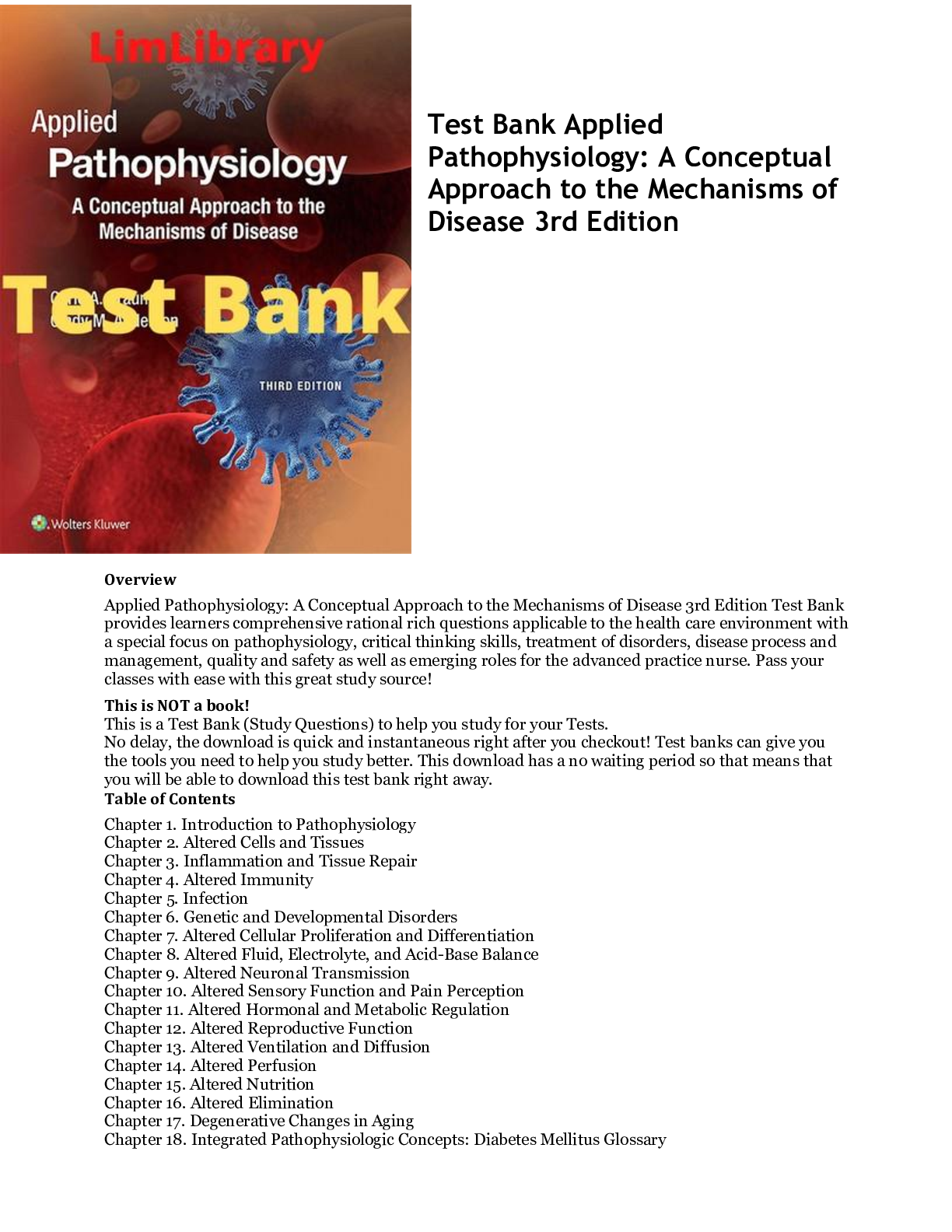

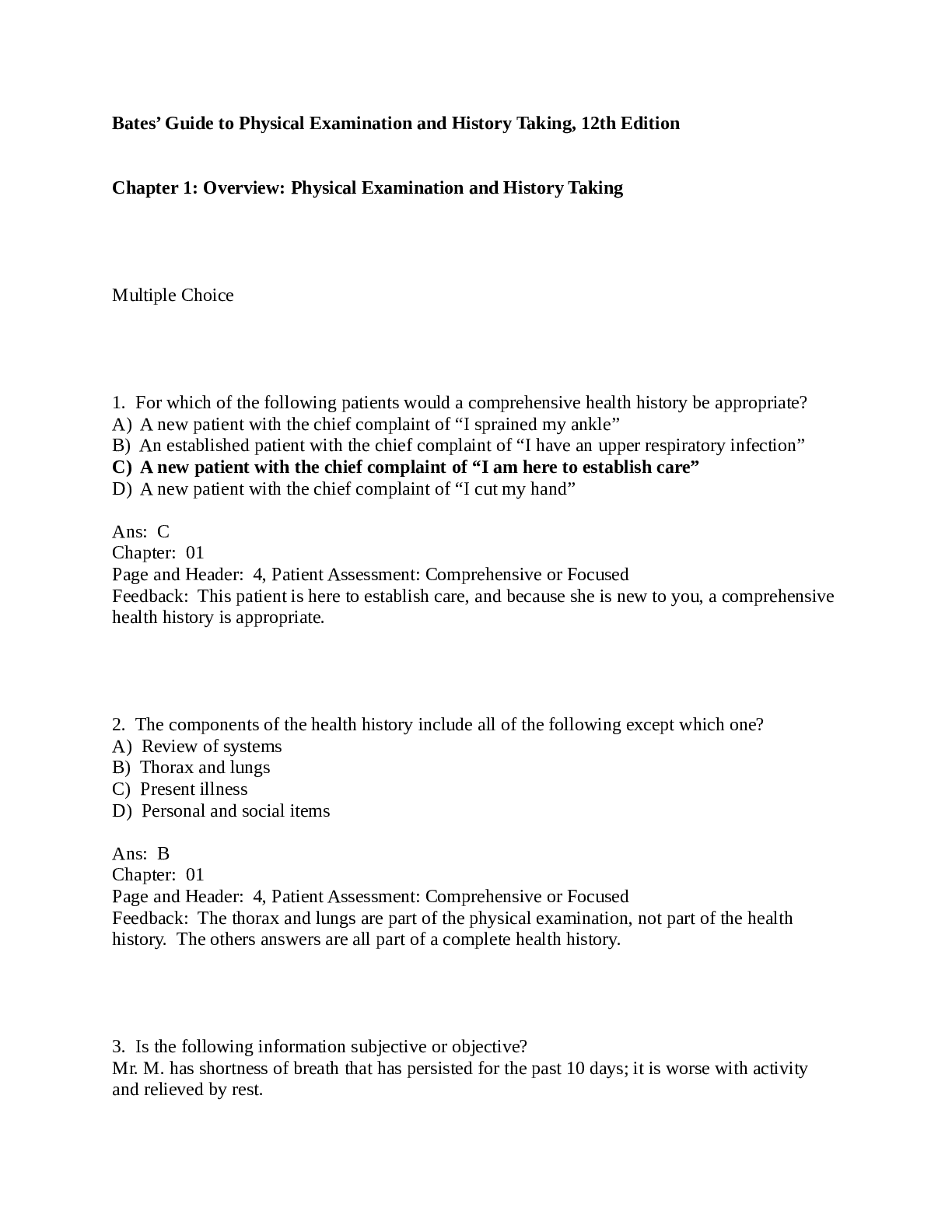
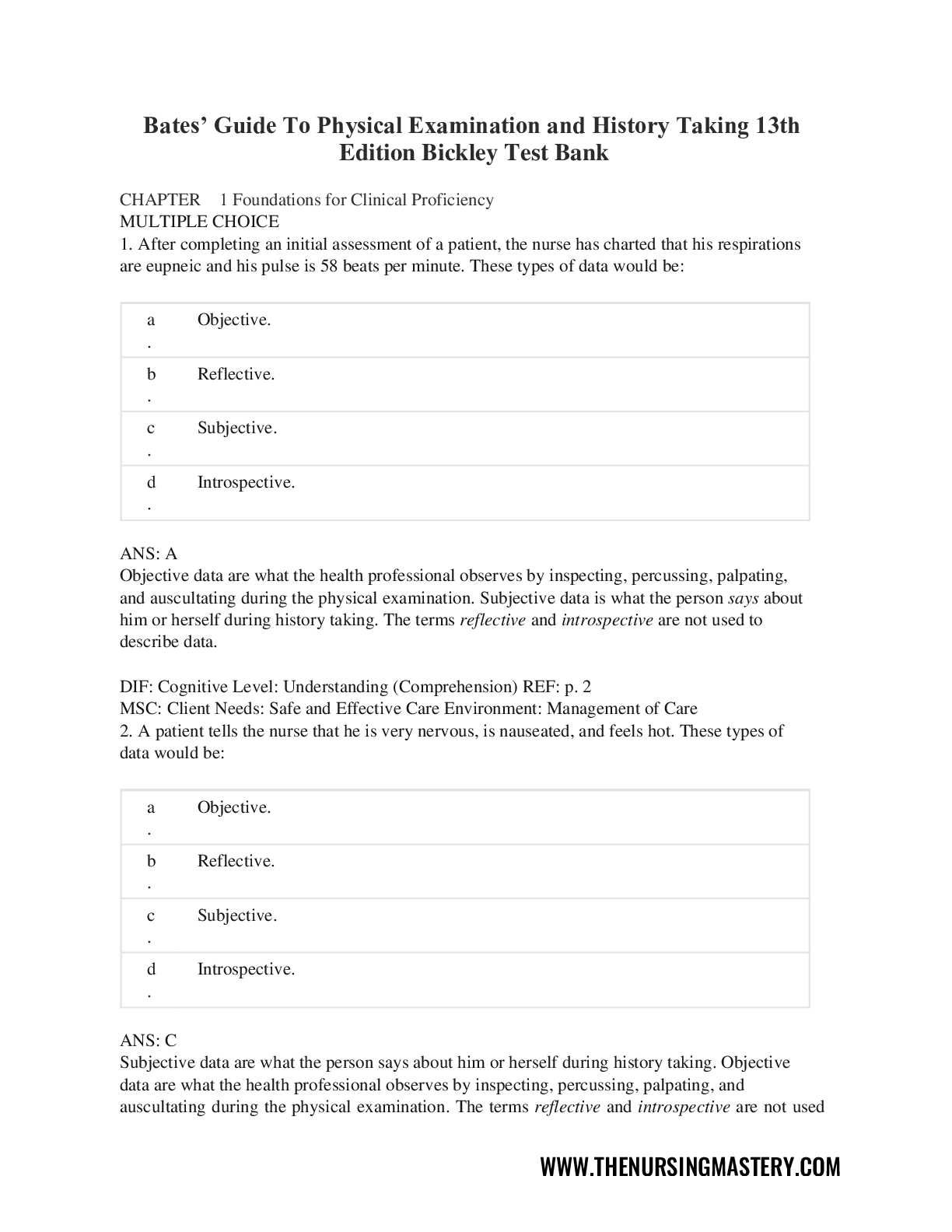
.png)
.png)
.png)

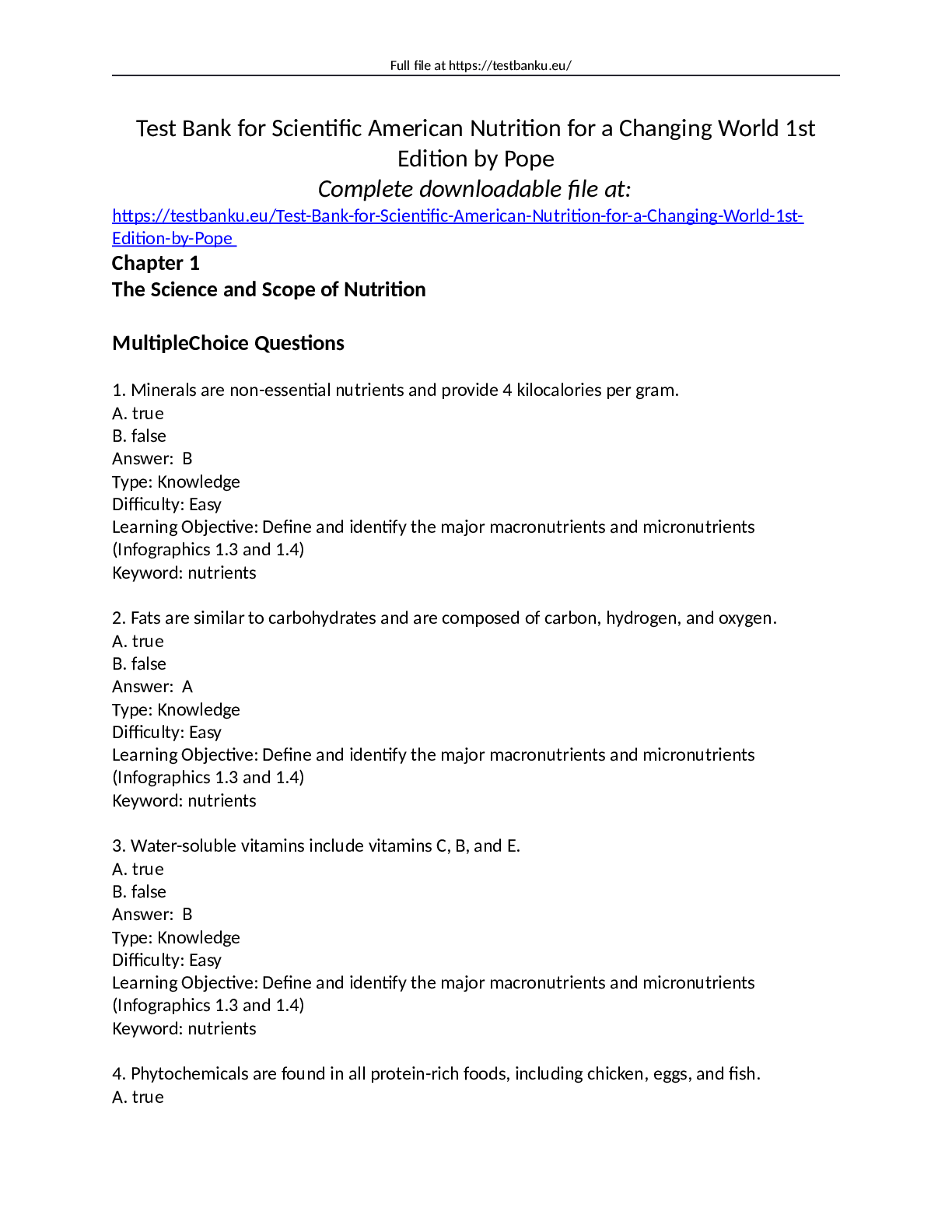
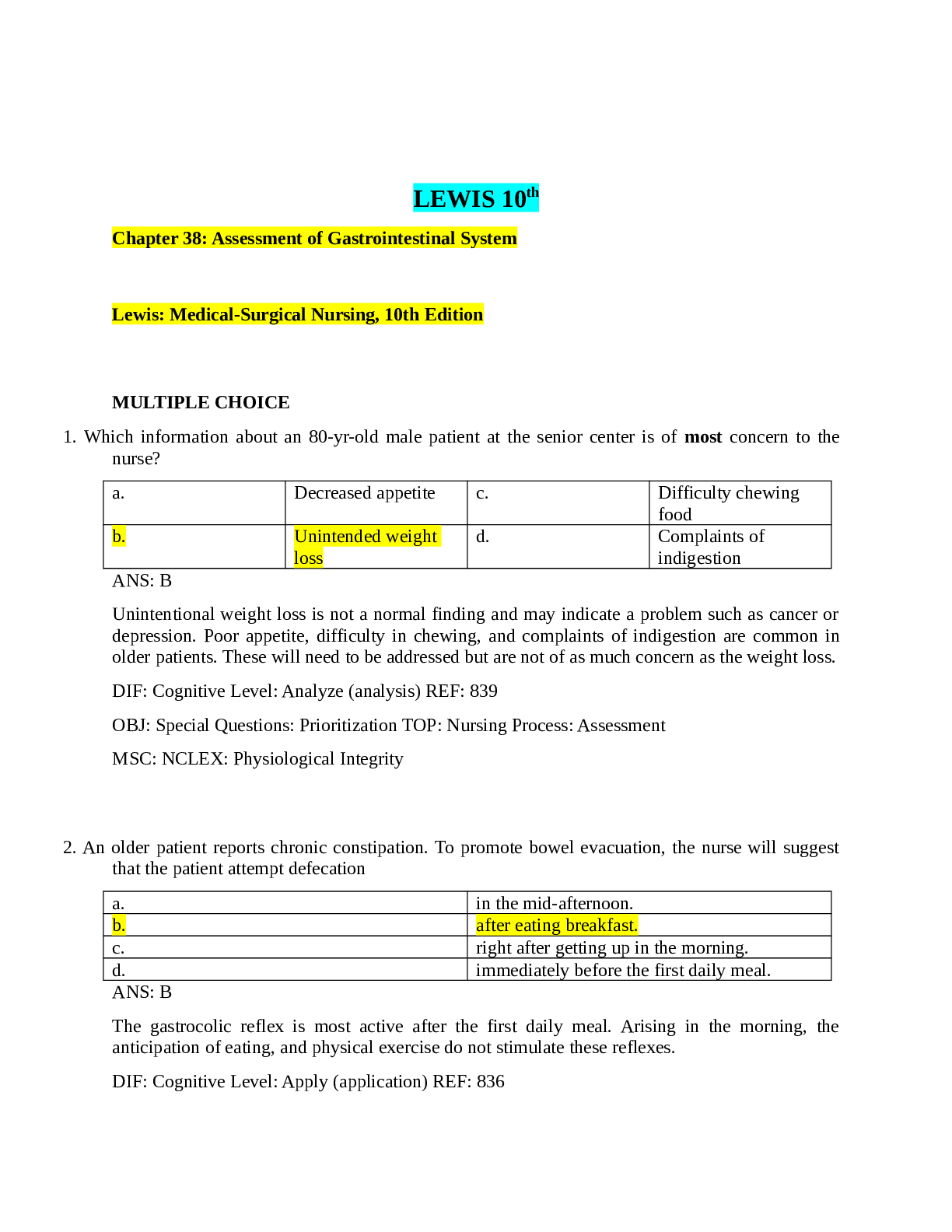

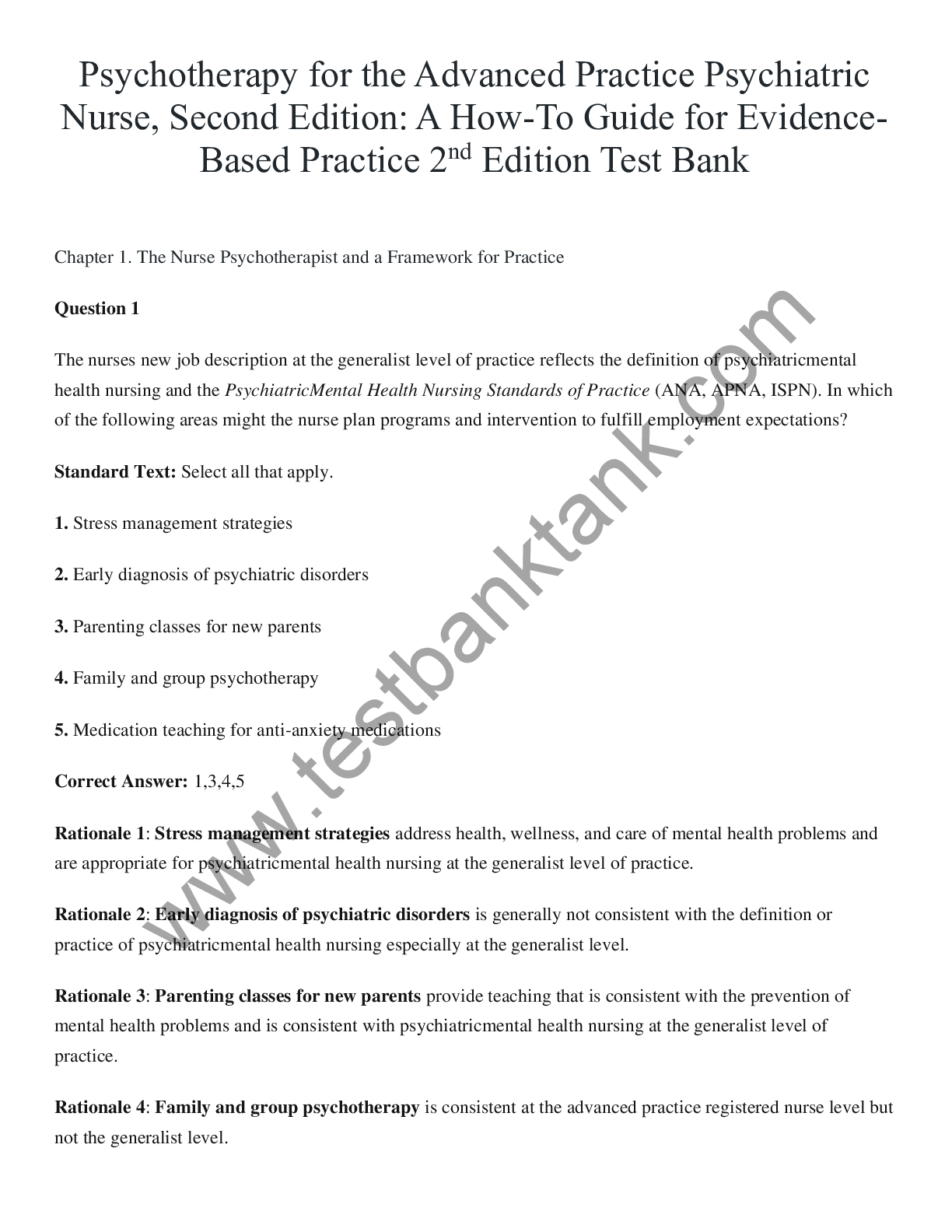
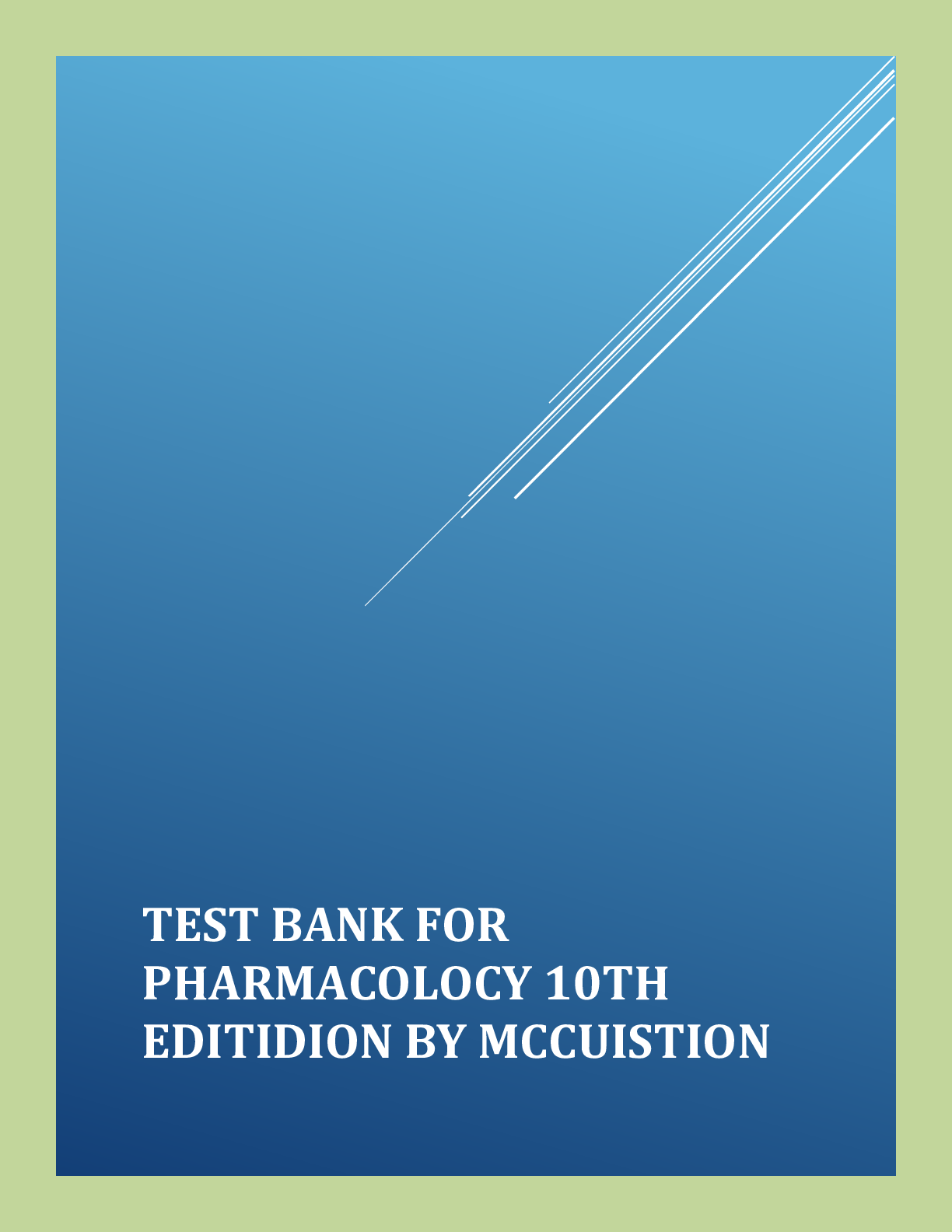
.png)



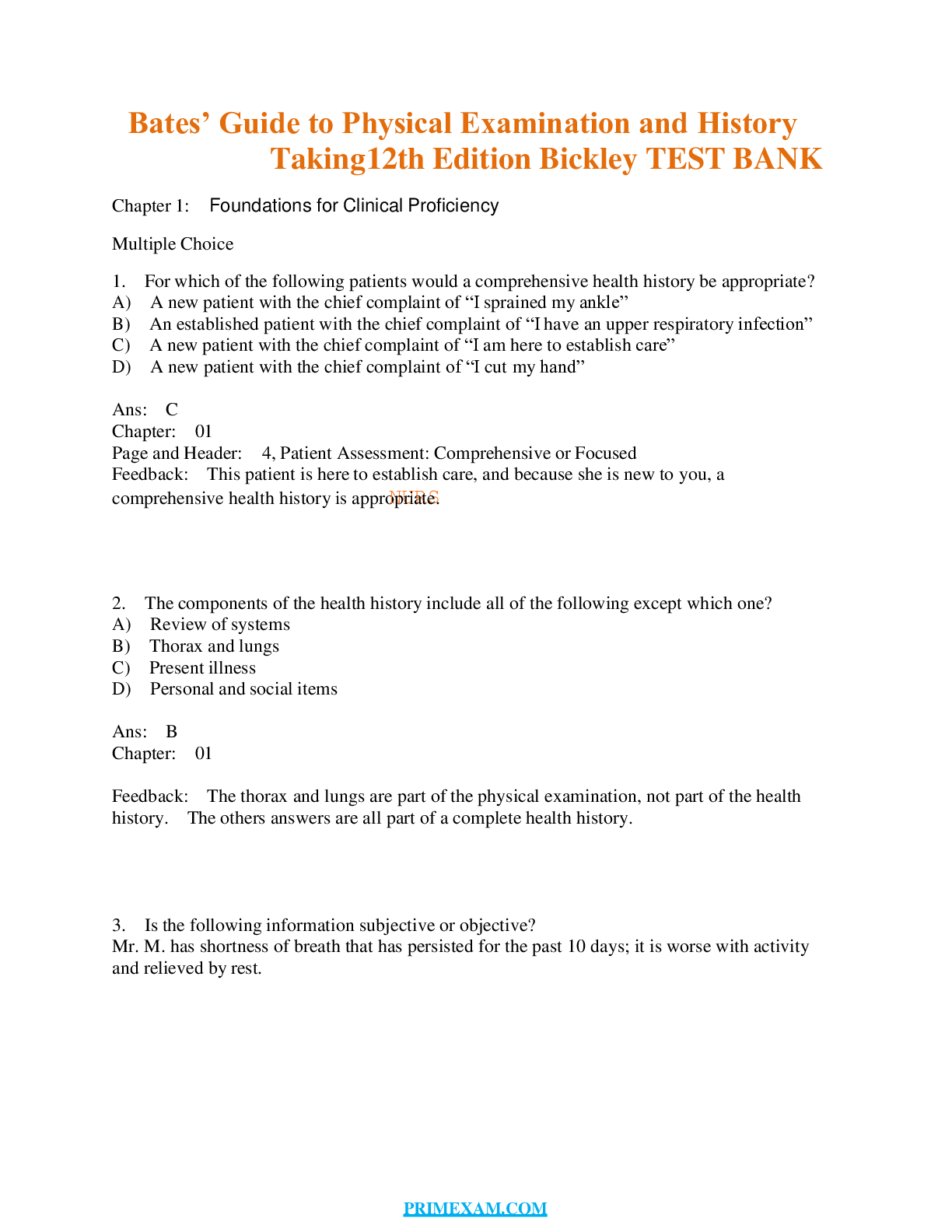
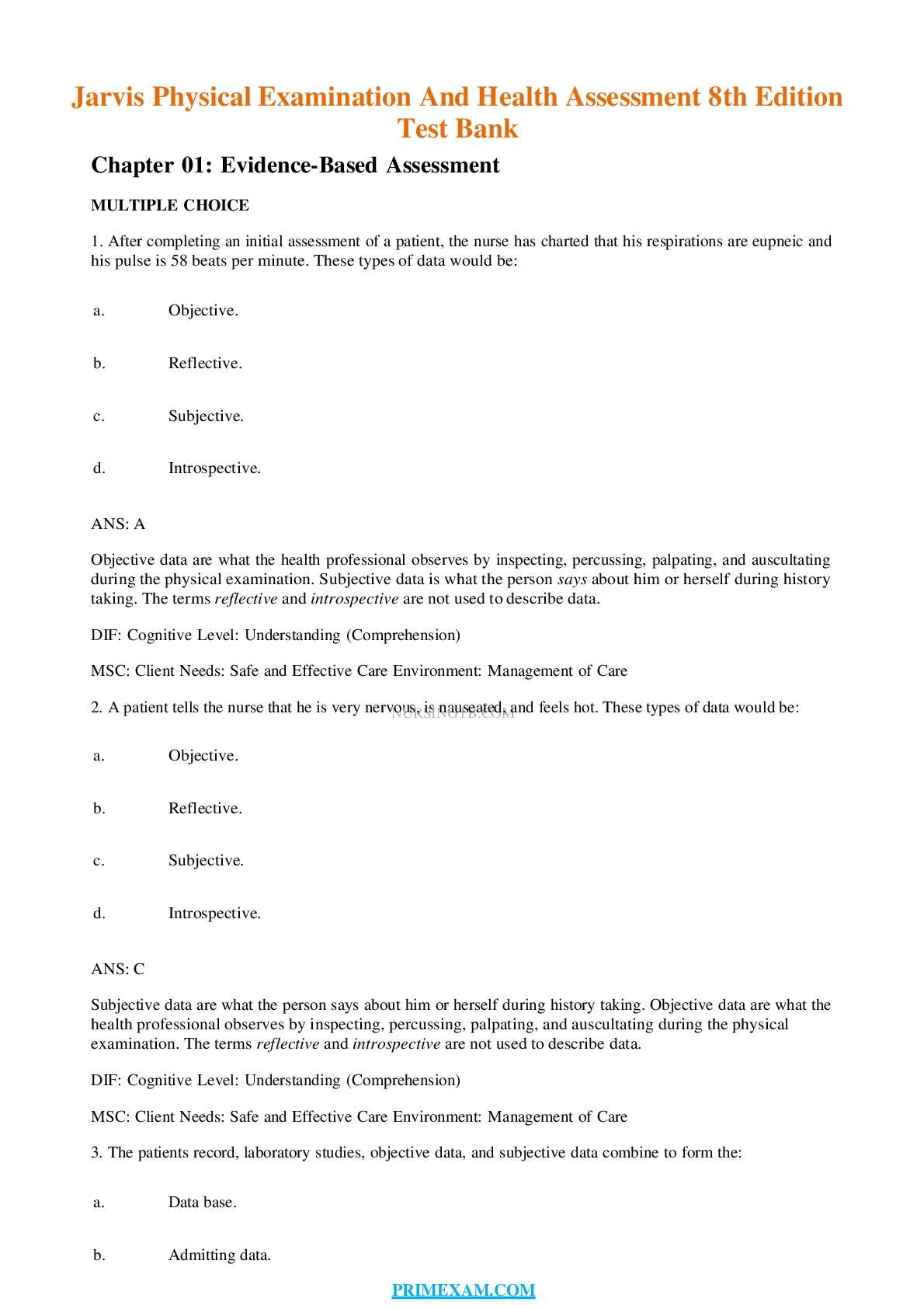
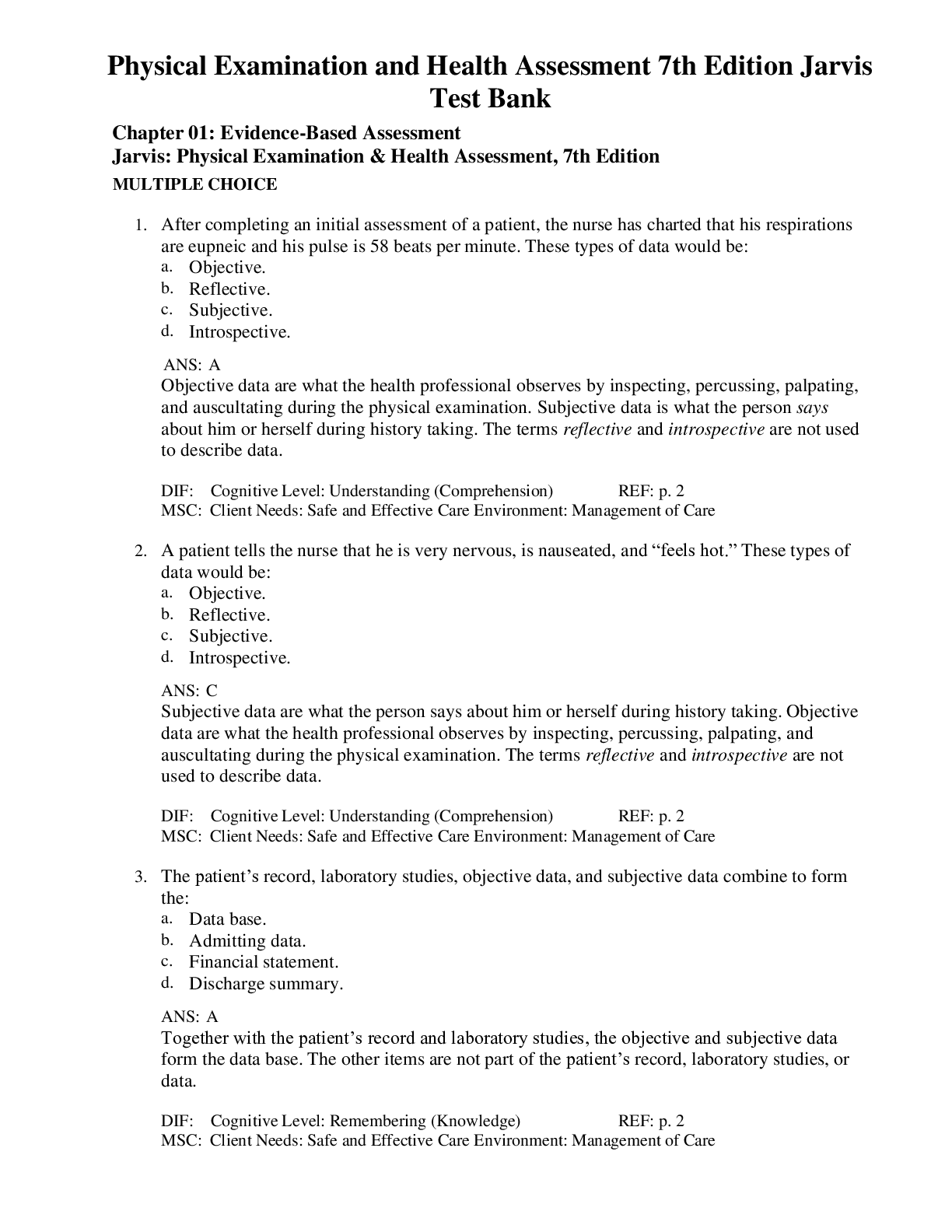
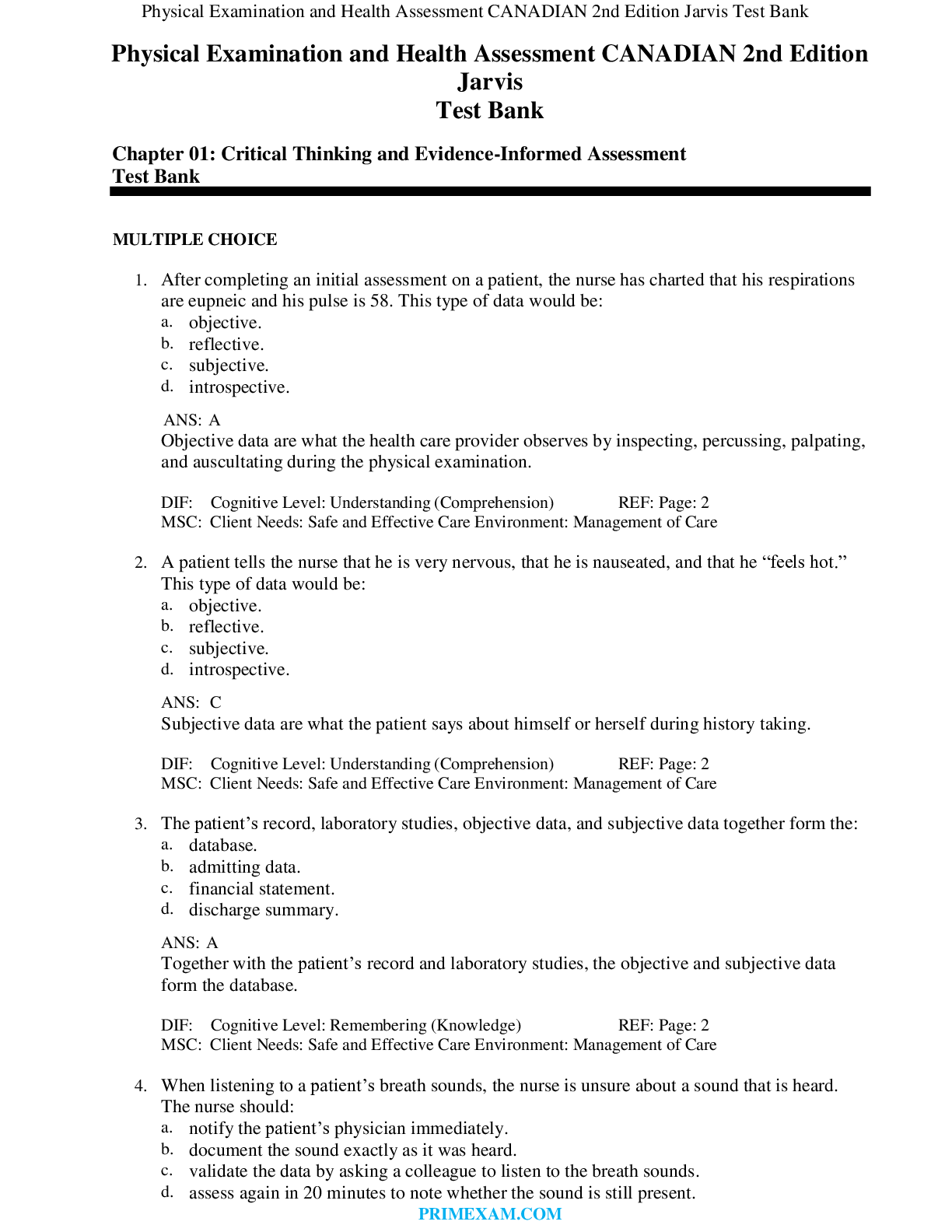
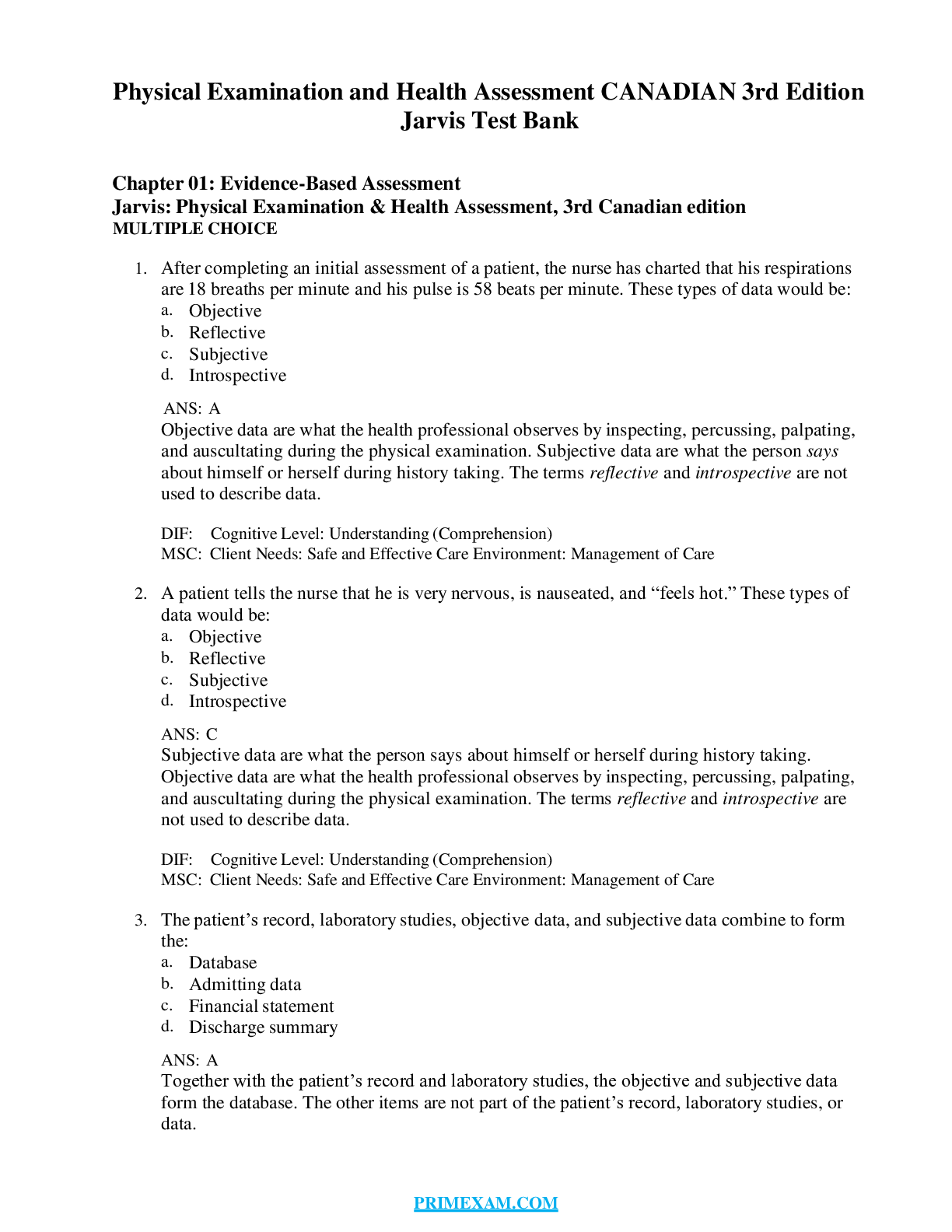
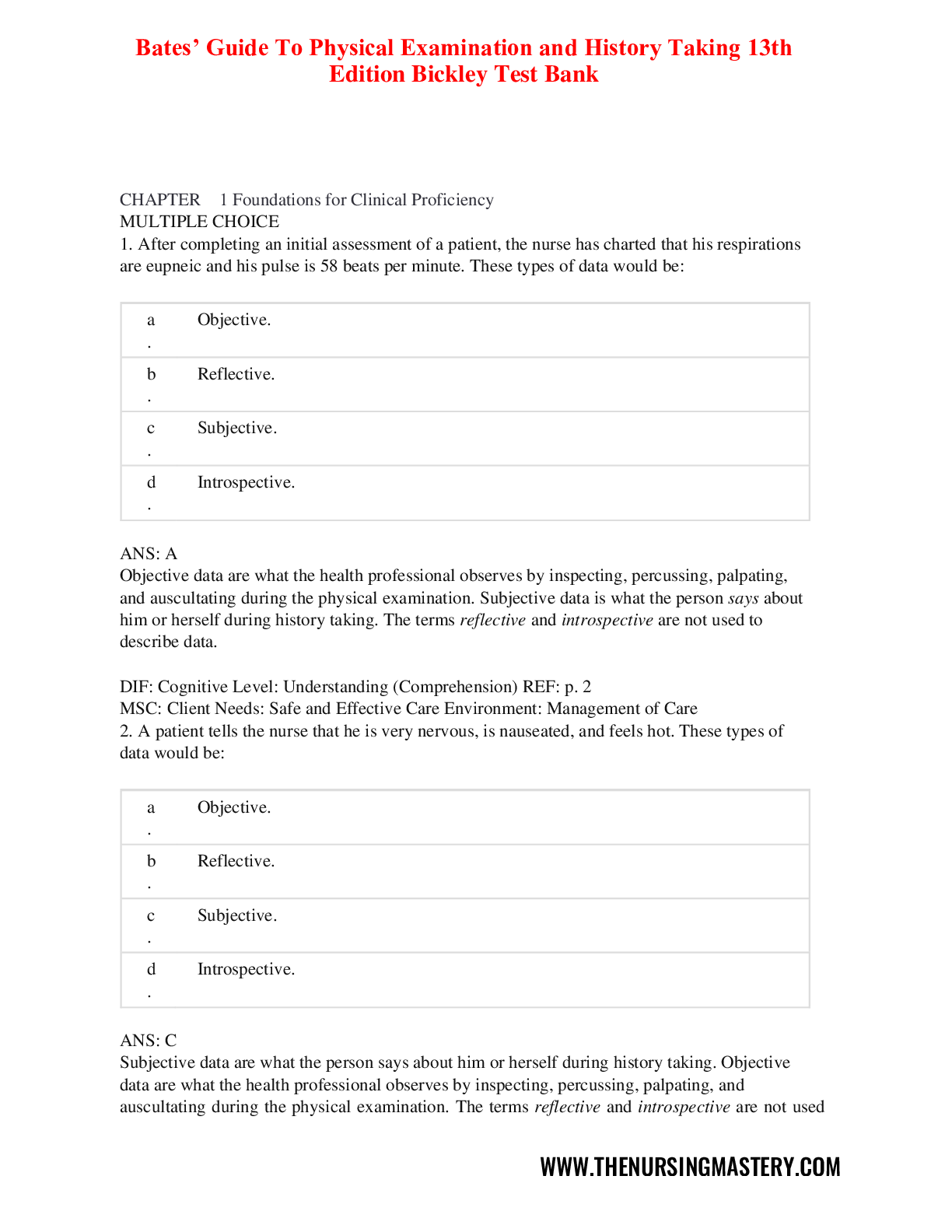
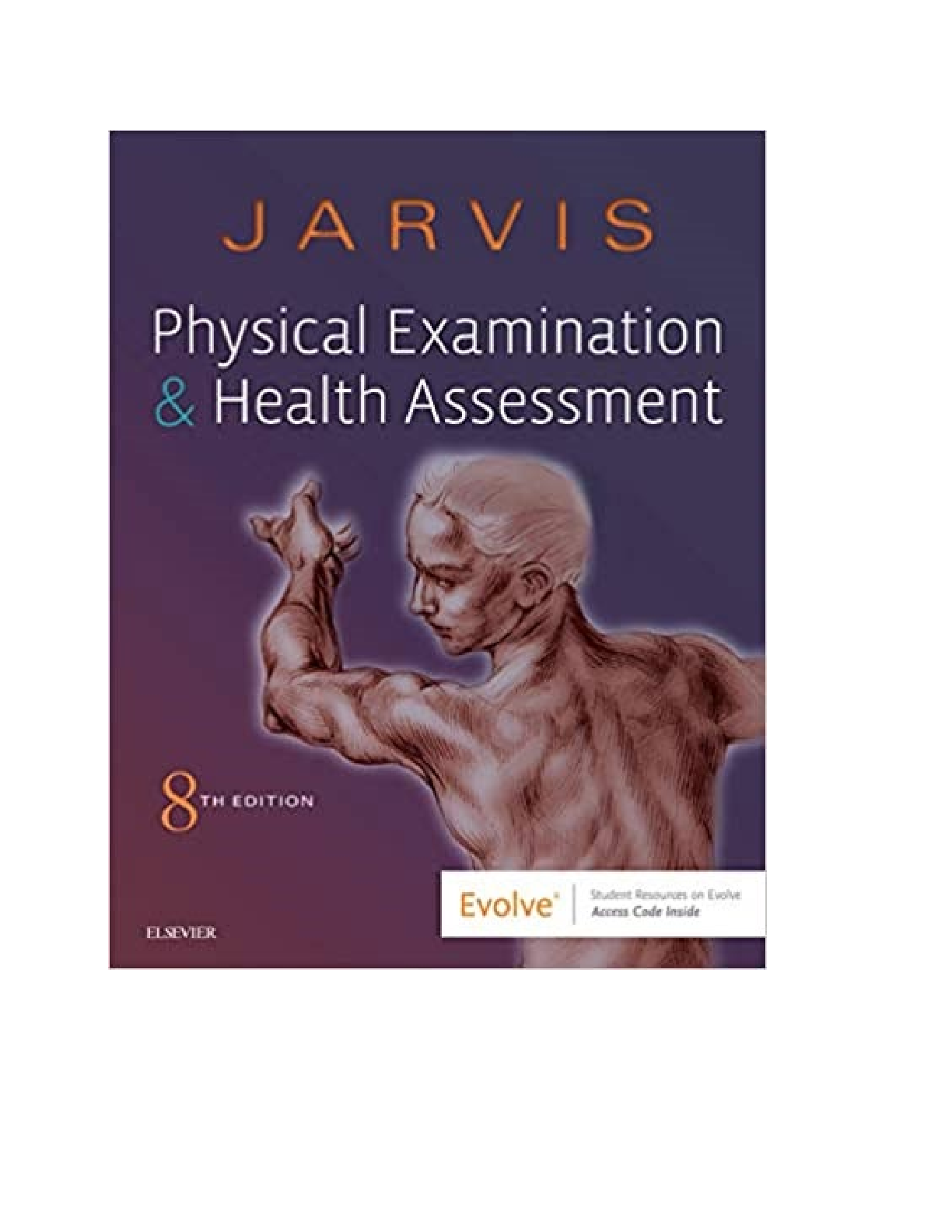
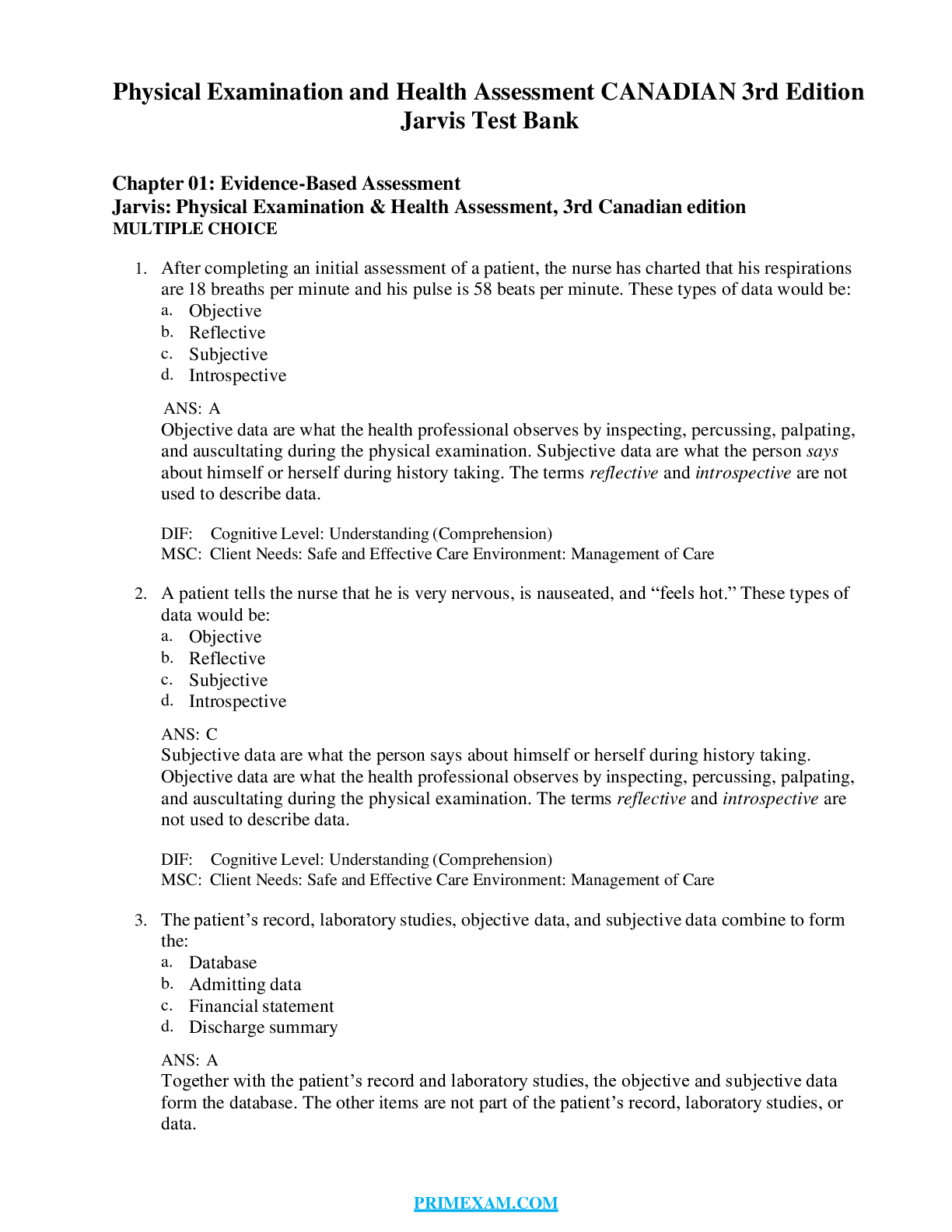

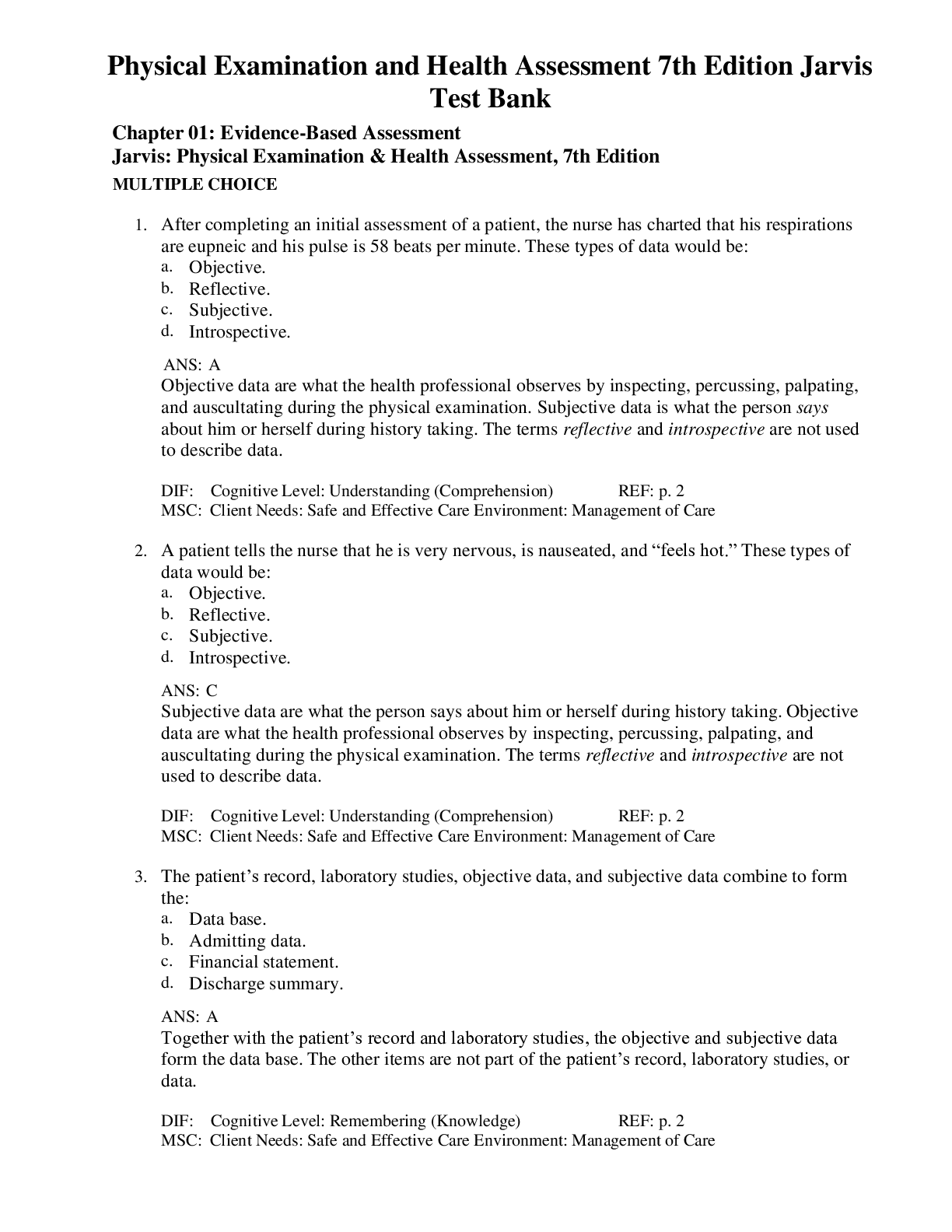
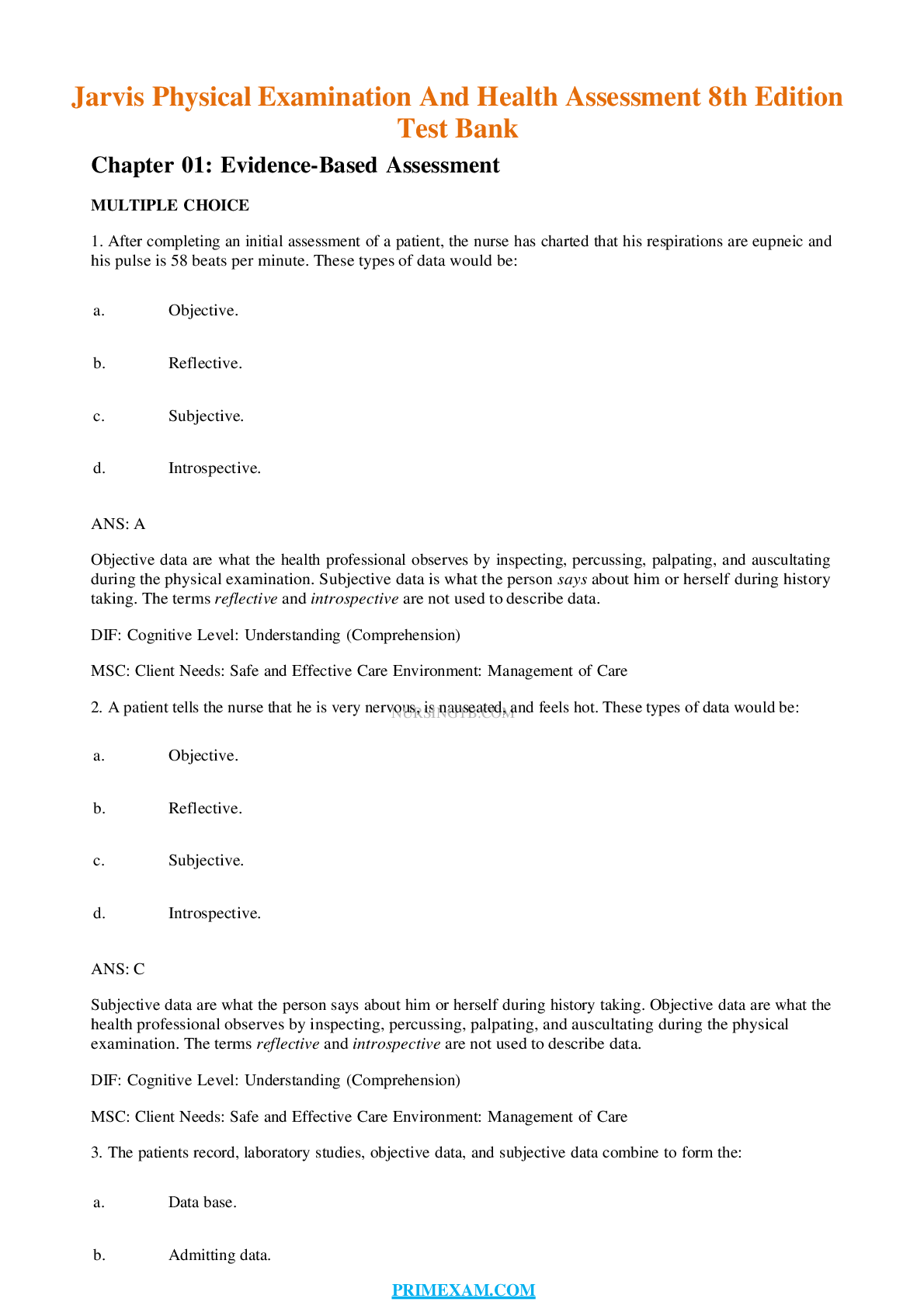
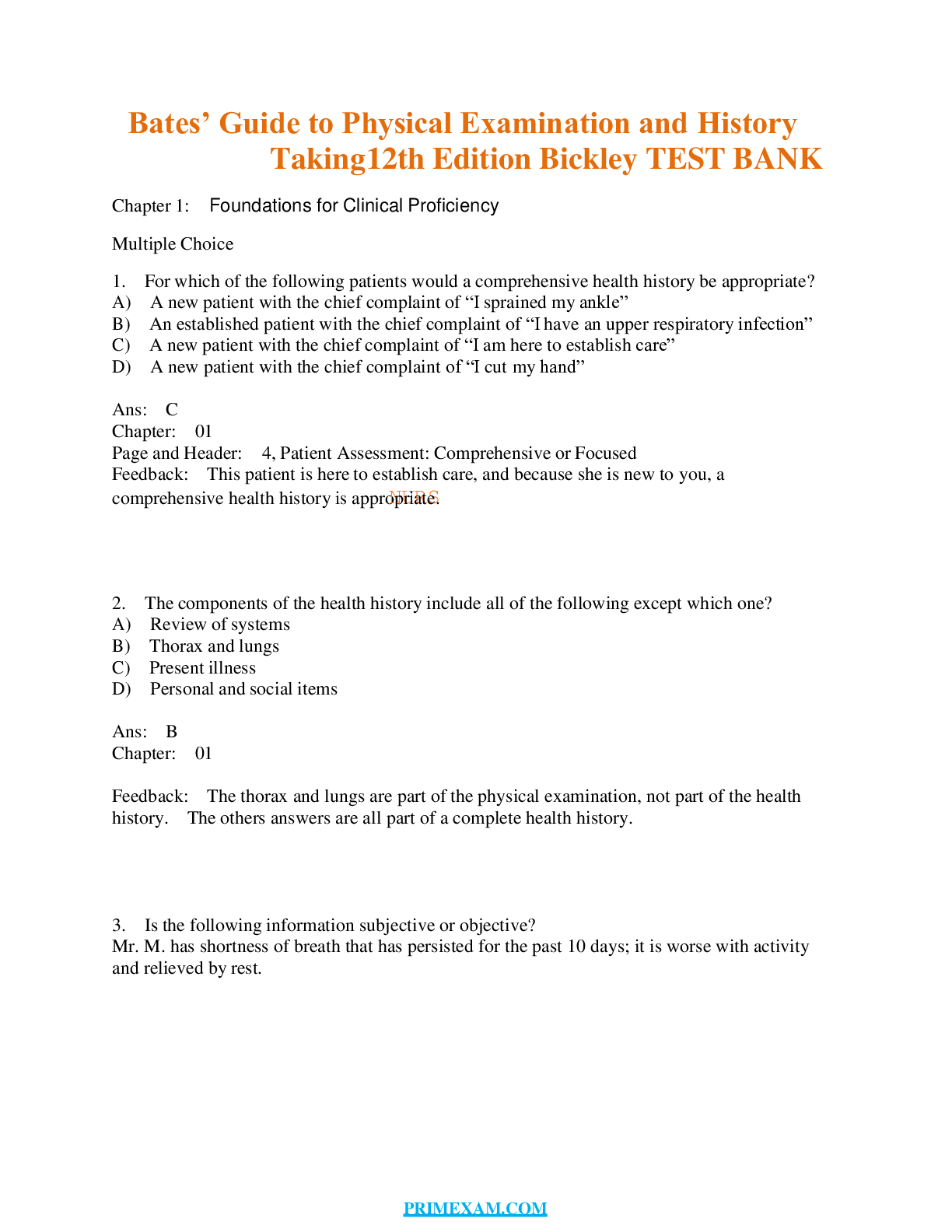

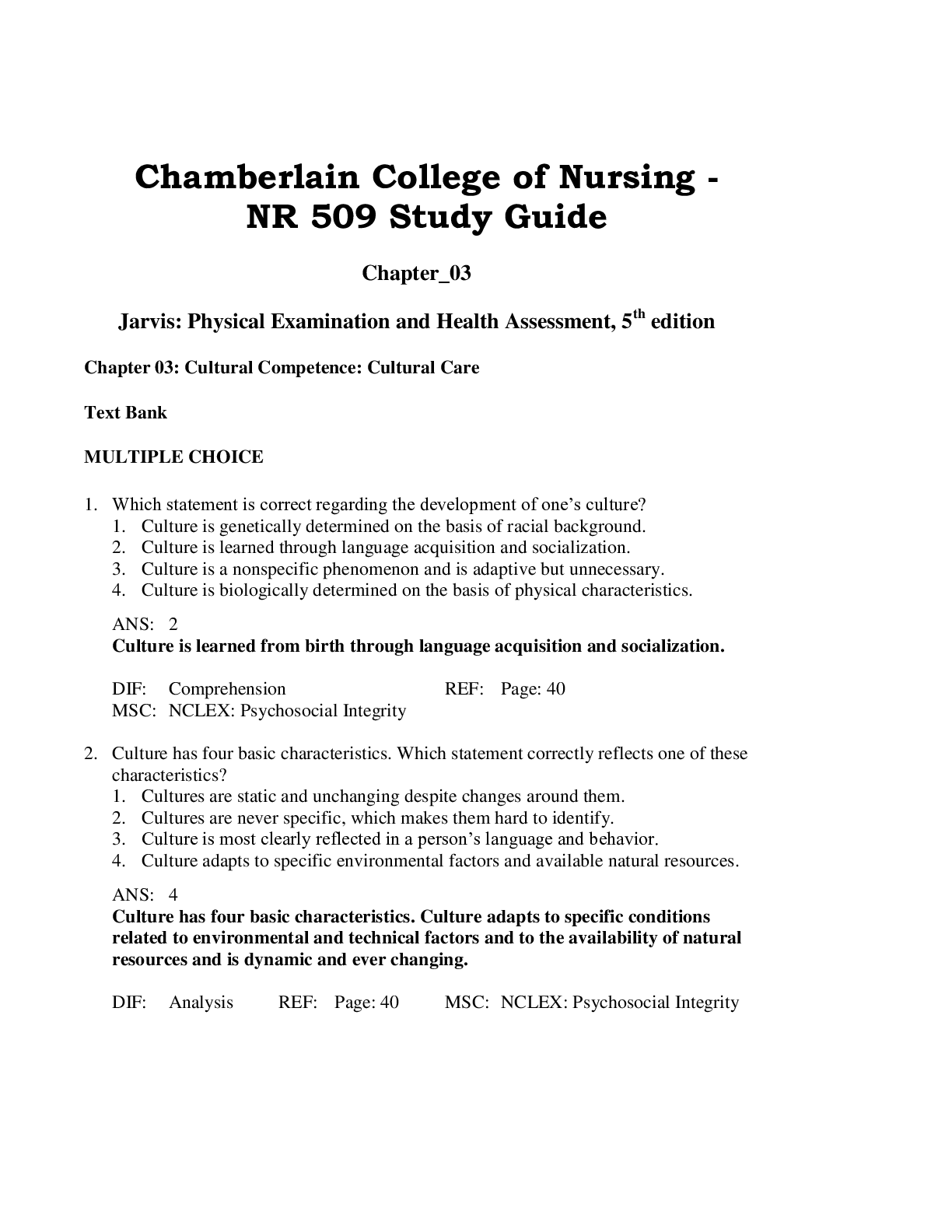


.png)

